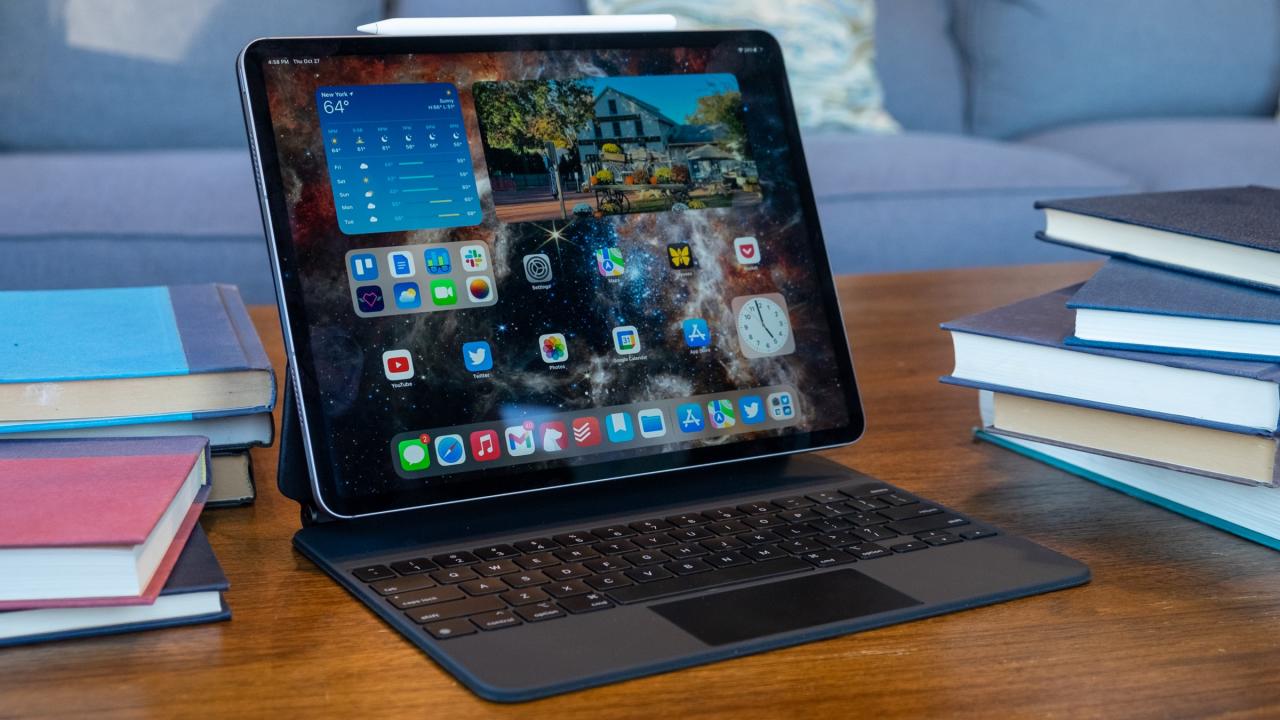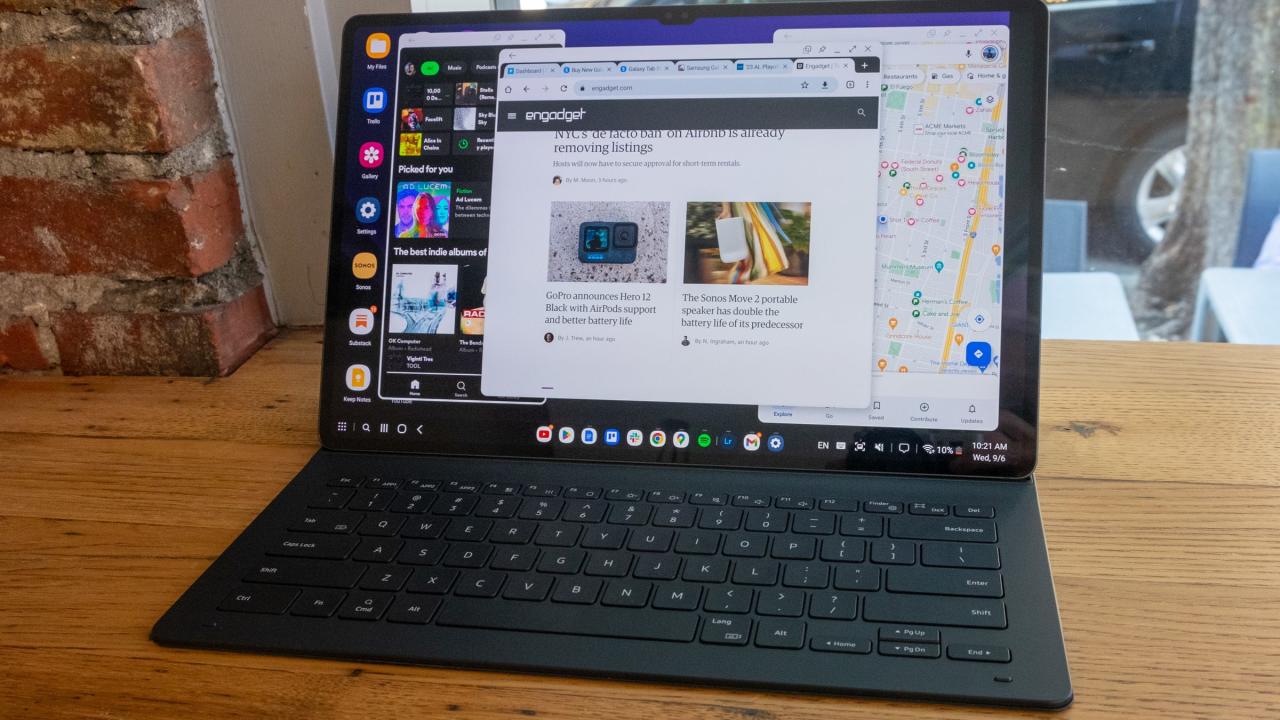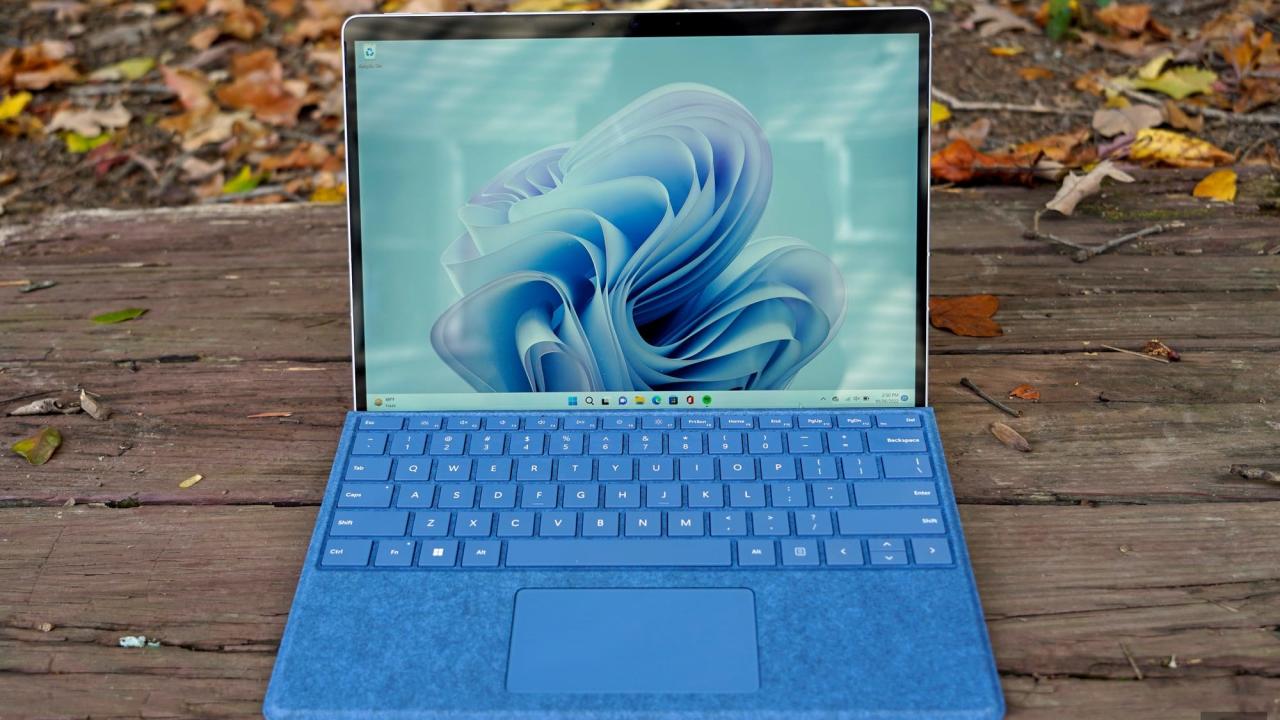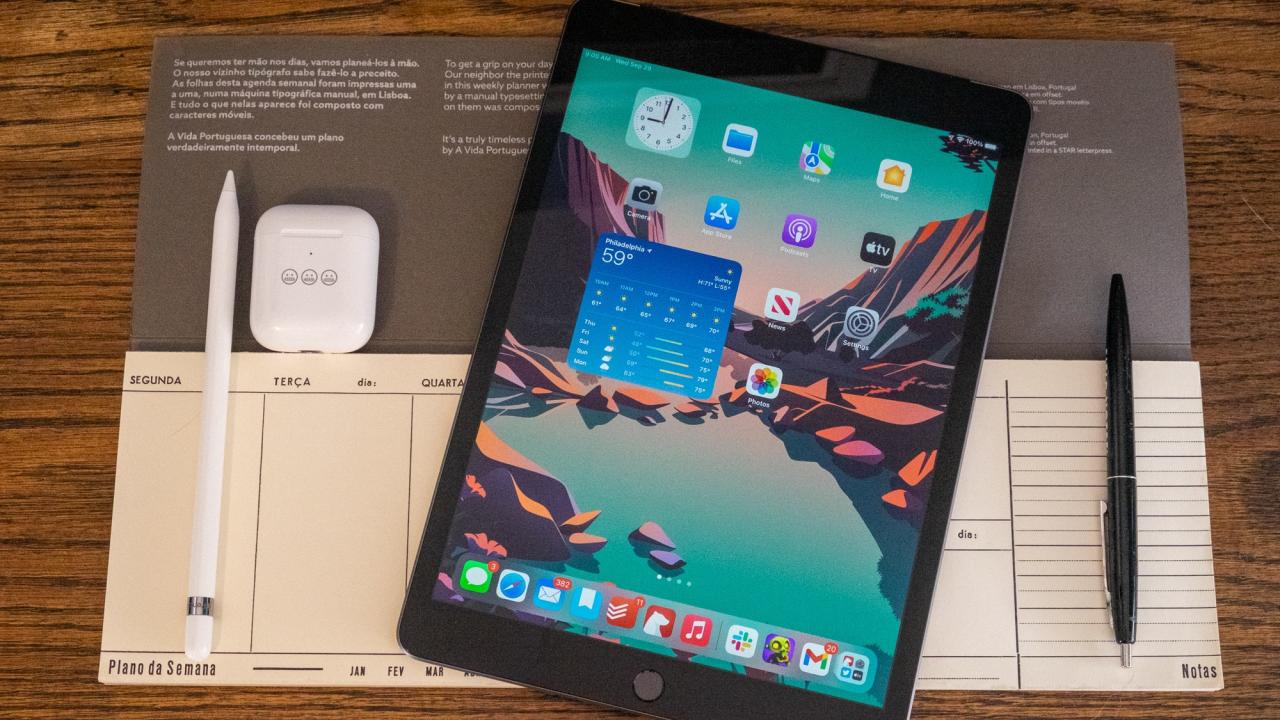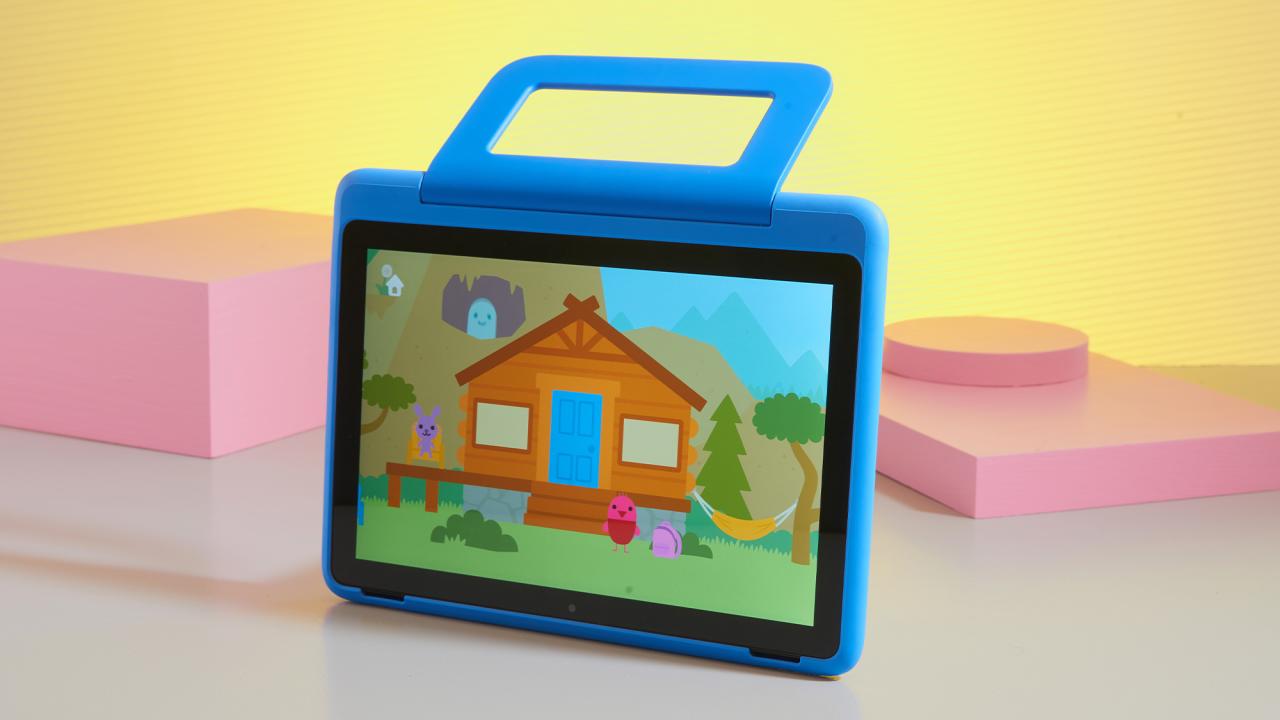While Apple’s iPads dominate the tablet space, it would be wrong to dismiss the many other slabs out there today. Samsung has some of the strongest Android tablets available now; Amazon’s Fire tablets stand out for their affordability; and there are more E Ink devices available today than ever before. While we’re eagerly awaiting the next round of iPads (which we believe will launch sometime early this year), there are plenty of solid slabs to buy right now if you’re in the market for one. After testing dozens of tablets at all different price ranges, we’ve collected our top picks here along with advice on what to look for before you make your next tablet purchase.
Which OS is right for me?
Before you even start looking at specific devices, consider how your new tablet will fit in with the gadgets you already own, and how you plan to use it. For example, if everyone in your house uses Macs and iPhones, it probably doesn’t make a lot of sense to buy an Android tablet, even if you’ve been tempted by the massive 14.6-inch screen on the new Galaxy Tab S9 Ultra. This goes double for anyone with an extensive library of purchased videos and music that might be harder to access after switching platforms.
Another consideration is the kind of work you’ll be doing. That’s because while most modern tablets are adept at browsing websites or playing games, some operating systems like iPadOS and Windows 11 are better designed to support multitasking and productivity than Android or even Chrome OS. It’s a similar situation for software, because while most popular apps and games are available on both Apple’s App Store and Google’s Play Store, more specialized software may only have proper support on desktop platforms like Windows or macOS.
What size screen should I get?
Figuring out the best screen size for you will also be related to the kind of work (or play) you intend to do. Larger displays make it much easier to view two apps side by side, and big screens also deliver a more immersive movie viewing experience. But at the same time, the larger the tablet, the less likely you’re going to want to move it around. That means you’re not only going to want to take stock of your workspace (i.e., if you have a desk or instead plan to work from a couch or even your bed), you’re also going to want to think about how the device will fit into your everyday routine or commute (if you have one).
Potential accessories
Finally, you’ll want to consider any add-ons or accessories you’re planning to use, which can range from detachable keyboards to things like external mics or a stylus. The good news is that many of the best tablets nowadays offer some kind of keyboard accessory, which allows the device to function more like a 2-in-1 instead of simply being a content consumption device. Some tablets also feature things like microSD card slots that support expandable storage, or optional 4G or 5G connectivity, which can be a real boon to frequent travelers. And if you’re planning to use the tablet mainly for work, you might want to grab a USB hub for connecting all your favorite peripherals.
How we test
When evaluating different tablets, there are a few important things we look for above all else: solid performance, a good screen and long battery life. For performance, we run a handful of synthetic tests like Geekbench 6, while also performing a number of real-world use cases such as editing photos and playing games. And with tablets often serving as hybrid devices, we also consider how easy it is to multitask and switch quickly between various apps. The more responsive a device feels, the better.
Because a tablet’s display is such a critical component, we also view a wide range of content to gauge things like brightness, color gamut and dynamic range. It’s important to take into account the difference between various panel types like OLED, which typically produce richer colors and excellent contrast but may not be as bright as a mini LED display. Recently, refresh rate has become an increasingly important spec as 90Hz and 120Hz screens can make scrolling smoother and graphics appear sharper in games.
We also consider a tablet’s design (including things like size, weight and water resistance), its connectivity (WiFi, Bluetooth, NFC, 5G, et cetera) and special features like stylus support or the ability to serve as a secondary display. That’s because, while tablets were often viewed as content consumption devices in the past, higher-end devices like the Surface Pro and iPad Pro are more than capable of replacing a laptop for a lot of people.
Finally, we test battery life by running our standard local video rundown test, which involves playing a single video on a loop from 100 percent until it runs out of juice. Ideally, a tablet should be able to last an entire working day, but longer runtimes are always welcome.
Display: 11-inch or 12.9-inch mini-LED Liquid Retina panel with ProMotion (120Hz) | Processor: Apple M2 | Storage: 128GB to 2TB | Battery life: Up to 10 hours | Camera: 12MP ultra wide front camera, 12MP Wide and 10MP ultra wide rear cameras
Read our full review of the Apple iPad Pro
Powered by the same Apple M2 chips you get in MacBooks, the iPad Pro is the best iPad and one of the most well-built tablets you can buy today. It’s available in two sizes (11 and 12.9 inches) and works with a range of accessories including the Apple Pencil and the extremely useful (but pricey) Magic Keyboard. And thanks to their 120Hz ProMotion mini-LED displays, the iPad Pro’s screen boasts strong brightness and fluid visuals, regardless of whether you’re watching a movie or creating a slideshow presentation. Recent versions of iPadOS have also made Apple’s most premium tablet a much more capable work device, with the addition of new sidebars for quickly switching between apps, a more powerful desktop-like UI for Safari, and various new toolbars throughout.
The main downside is that starting at $800 for a base 11-inch model with 128GB of storage, Apple’s iPad Pros aren’t cheap, and that’s before you tack on any extras like cellular connectivity or a keyboard. But considering there’s a good chance the latest iPad Pro is more powerful than your current laptop, there isn’t really anything you can throw at Apple’s top-of-the-line tablet it can’t handle.
One final note is that if you like the iPad Pro but want something a bit more affordable, there’s also the fifth-gen iPad Air. This one is powered by the M1 chipset, but it has Apple Pencil support and optional 5G connectivity. And with a 10.9-inch screen, it’s basically the same size as the smaller iPad Pro too. The main difference is that the iPad Air’s display isn’t quite as bright and doesn’t support a 120Hz refresh rate. But if you’re ok with that, the 5th-gen iPad Air is essentially an iPad Pro with a less fancy screen that starts at $599 instead of $799.
Display: 11-inch LCD, 12.4-inch or 14.6-inch Super AMOLED | Processor: Qualcomm Snapdragon 8 Gen 2 | Storage: Up to 1TB (depending on model) | Battery life: Up to 9 hours | Camera: S9: 13MP rear, 12MP ultrawide front / S9+: 13MP + 8MP ultrawide rear, 12MP ultrawide front / S9 Ultra: 13MP + 8MP ultrawide rear, 12MP + 12MP ultrawide front
Read our full review of the Samsung Galaxy Tab S9 Ultra
Samsung offers its Galaxy Tab S9 with three screen sizes: 11, 12.4 and 14.6 inches. We only reviewed the 14.6-inch Galaxy Tab S9 Ultra, but all three tablets have identical specs other than screen size and a few slight differences in the camera array. While the S9 Ultra is a bit too big to be comfortable using in your hands for very long, the 11- and 12.4-inch models are your best choice for an Android tablet out there, with outstanding screens and an included S Pen stylus that’s extremely responsive.
Samsung bumped up both the RAM and processor this year on the Galaxy Tab S9 series. Qualcomm’s Snapdragon 8 Gen 2 chip is more than powerful enough for everything I wanted to do, and the 12GB of RAM is a big bump over the 8GB on last year’s tablets. These tablets are even rated IP68 for water and dust resistance – so if you want to take your S9 in the bath and watch a movie, you don’t have to worry about destroying it if it slips into the tub. Add in a solid accessory ecosystem with multiple different keyboard covers plus the Dex multitasking mode and the S9 can be a powerful productivity tool, too.
Truly great Android tablets are few and far between, and Google stepped back into the ring with its own Pixel Tablet. While it’s not compelling enough as a tablet to knock the Galaxy Tab S9 out of our top spot, it could be an intriguing option for those that want a device that can be used as both a tablet and a smart display. Admittedly, it shines as the latter, which makes it a good thing that Google includes the base in the $500 price. There’s also an $80 case you can get for the Pixel Tablet, which adds a very useful kickstand that you can use whenever you don’t want to dock the device but still want to prop it up.
Display: 13-inch or 15-inch PixelSense touchscreen | Processor: Microsoft SQ3 or Intel Evo i5/i7 | Storage: 128GB to 1TB | Battery life: Up to 15.5 hours | Camera: 1080p Windows Hello front camera, 10MP rear camera
Read our full review of the Microsoft Surface Pro 9
While most people think of Microsoft’s Surface Pro devices as a line of 2-in-1s, because they don’t come with a keyboard (you need to purchase it separately), that technically makes them tablets. But don’t be fooled, because thanks to Windows 11 and support for a range of 12h-gen Intel processors, Microsoft’s Surface Pros are designed for productivity.
The latest Surface Pro 9 has a beautiful display with a smooth 120Hz refresh rate and improved stereo speakers, while the inclusion of an IR facial recognition camera allows you to log in to the system in a snap. Another nice bonus is that unlike a lot of tablets, the Surface Pro 9’s SSD is user accessible, allowing you to upgrade its storage yourself whenever you want. And thanks to improvements in Windows 11, the Surface Pro 9 is better suited to life as a tablet without ever needing to attach a smart keyboard thanks to larger app icons and more touch-friendly controls.
Display: 10.2-inch Retina display | Processor: A13 Bionic | Storage: 64GB, 256GB | Battery life: 10-14 hours | Camera: 12MP ultra wide front camera, 8MP wide rear camera
Read our full review of the Apple 10.2-inch iPad
If you just want a simple tablet for a reasonable price, it’s hard to go wrong with the standard Apple iPad. Starting at $329, the basic iPad has a 10.2-inch display with good brightness (500 nits) and a relatively speedy A13 Bionic chip. It’s also the last iPad that still features an old-school Touch ID home button.
After being refreshed last year, the ninth-gen iPad got updated features including Apple Pencil support, improved cameras (in front and back) and double the base storage (64GB, up from 32GB). And just like its more expensive siblings, this budget tablet is available in a WiFi-only model or with optional 4G LTE cellular connectivity. The entry-level iPad is also the cheapest device Apple sells that gives you access to the App Store, which makes it a good multimedia device and a handy way of managing your media library across your other Apple devices at an affordable price.
Display: 10.1-inch 1080p display | Processor: 2.0 GHz octa-core processor | Storage: 32GB, 64Gb (expandable up to 1TB) | Battery life: Up to 12 hours | Camera: 2MP front camera, 5MP rear camera
If you’re in the market for a new tablet for your child, the Amazon Fire HD 10 Kids Pro is the easy pick, especially for first time users. Starting at $200, it’s the cheapest tablet on this list, and unlike more adult-oriented fare, it comes with an included “kid-proof” case and a two-year warranty. Amazon says if your kid breaks the tablet, the company will replace it for free.
Other useful add-ins include a free one-year subscription to Amazon Kids+, which unlocks more than 20,000 games, books and apps designed for children. There’s also a handy dashboard for parents that allows you to set time limits, content filters and educational goals. And even though its 3GB of RAM and 32GB of base storage aren’t much, its 1080p display is plenty sharp and it has a microSD card slot for expandable storage. And if you want a slightly smaller and more affordable option, there’s the $140 Amazon Fire HD 8 Kids Pro too.
FAQs
What is the best brand for tablets?
The best brand for tablets is really the brand you feel most comfortable with. We recommend taking stock of the gadgets you already have — do you live in the Apple ecosystem already? An iPad might be best for you then. Do you have a Samsung phone? If so, a Galaxy Tab will likely be the most convenient choice. There is no one “best brand” for tablets; you’ll find good options made by companies including Apple, Google, Samsung, Microsoft and Amazon.
Can a tablet replace a laptop?
It’s possible for a tablet to replace a laptop, but you’ll need a few accessories to truly make the experience as close as possible to that of a traditional notebook. A keyboard is a must, be it a keyboard case or a Bluetooth accessory that you keep with you. Some keyboard cases, like apple’s Magic Keyboard for the iPad, have a built-in trackpad, which will be more ergonomic than tapping on your tablet’s screen for input. Additionally, you could go one step further and use a wireless mouse that connects via Bluetooth to your tablet. If you’re primarily looking for a tablet to replace your laptop, consider buying a 2-in-1 laptop since those systems typically consist of high-powered tablets that are designed to work well with (and without) keyboards.
